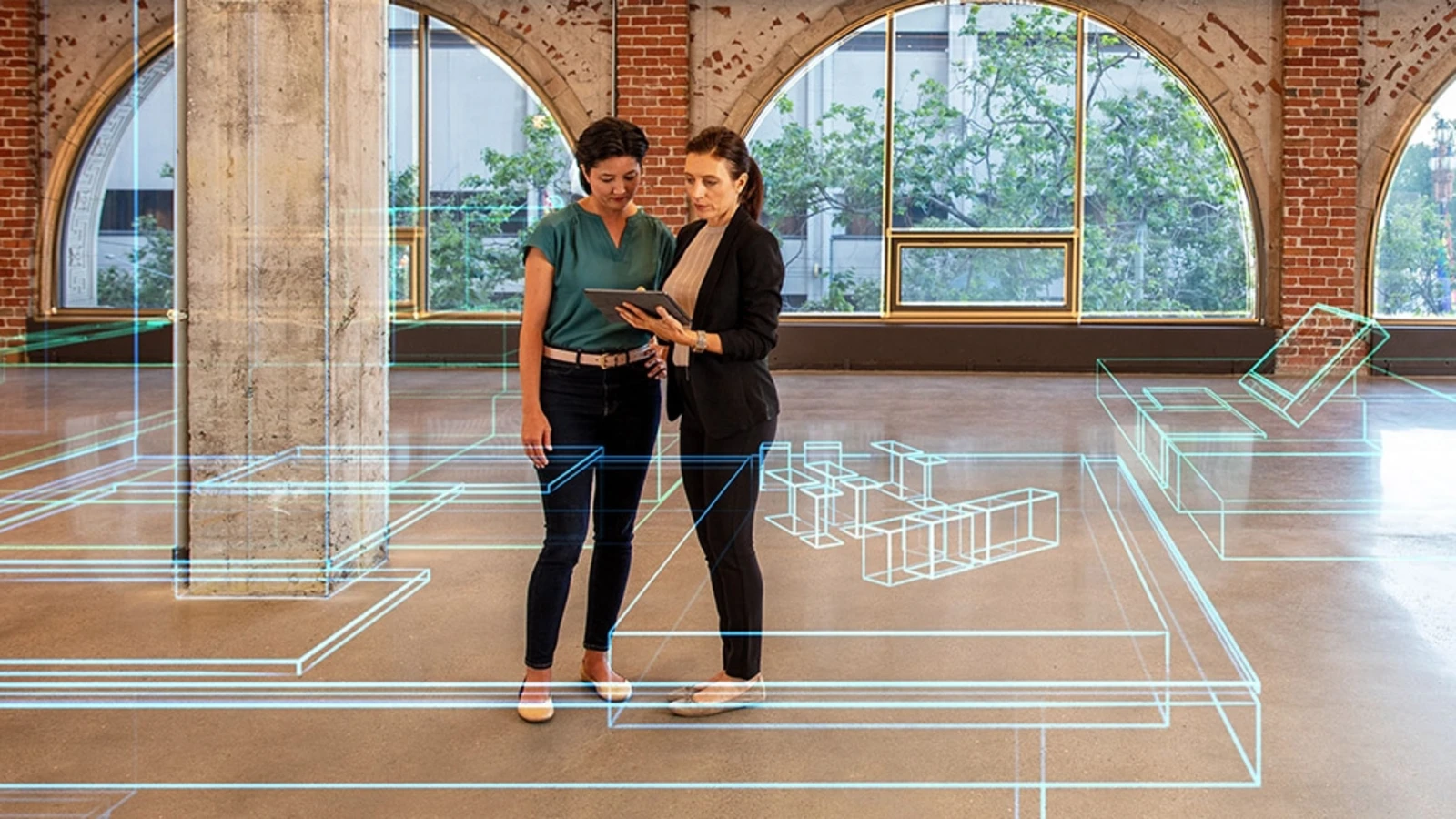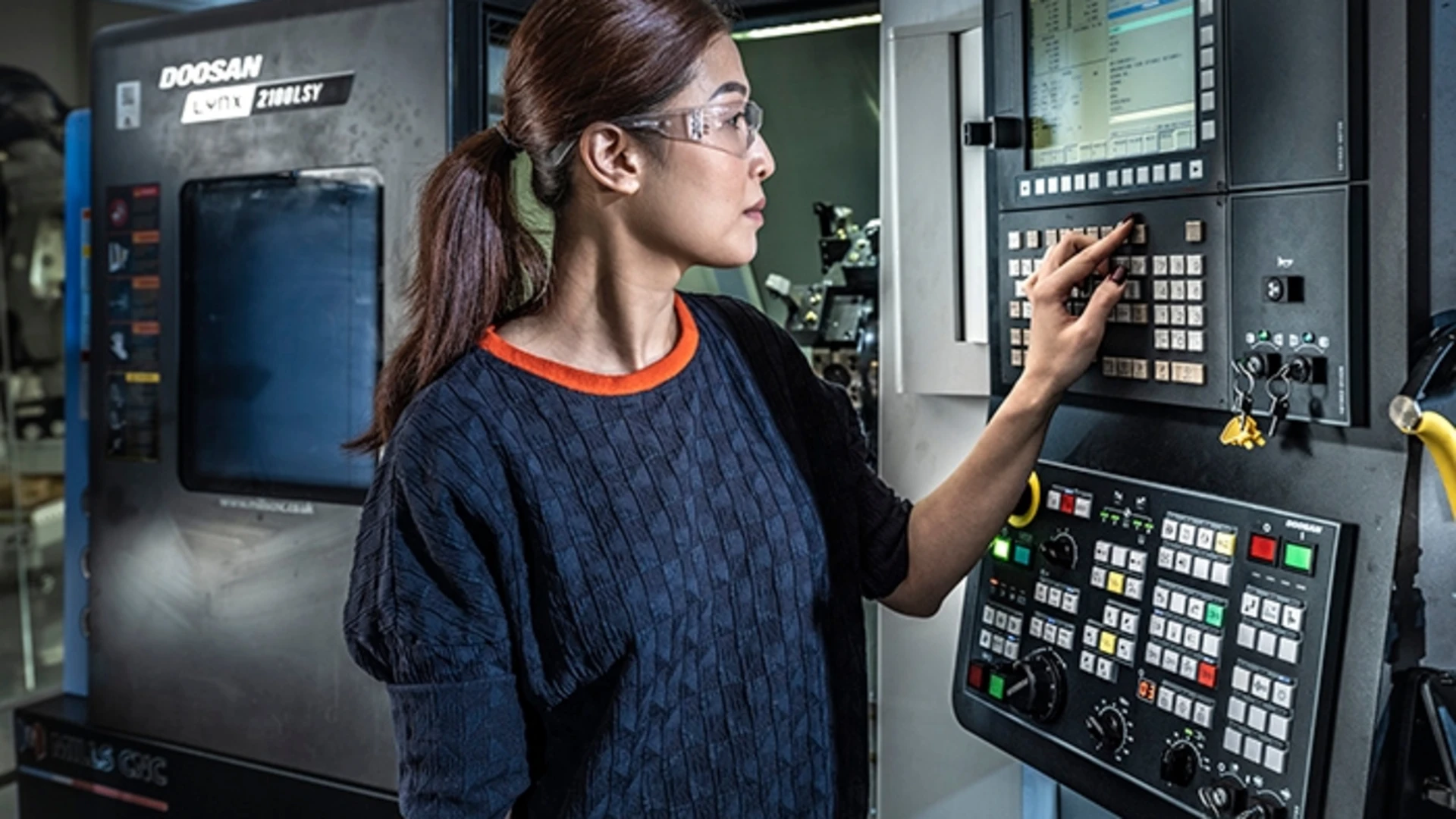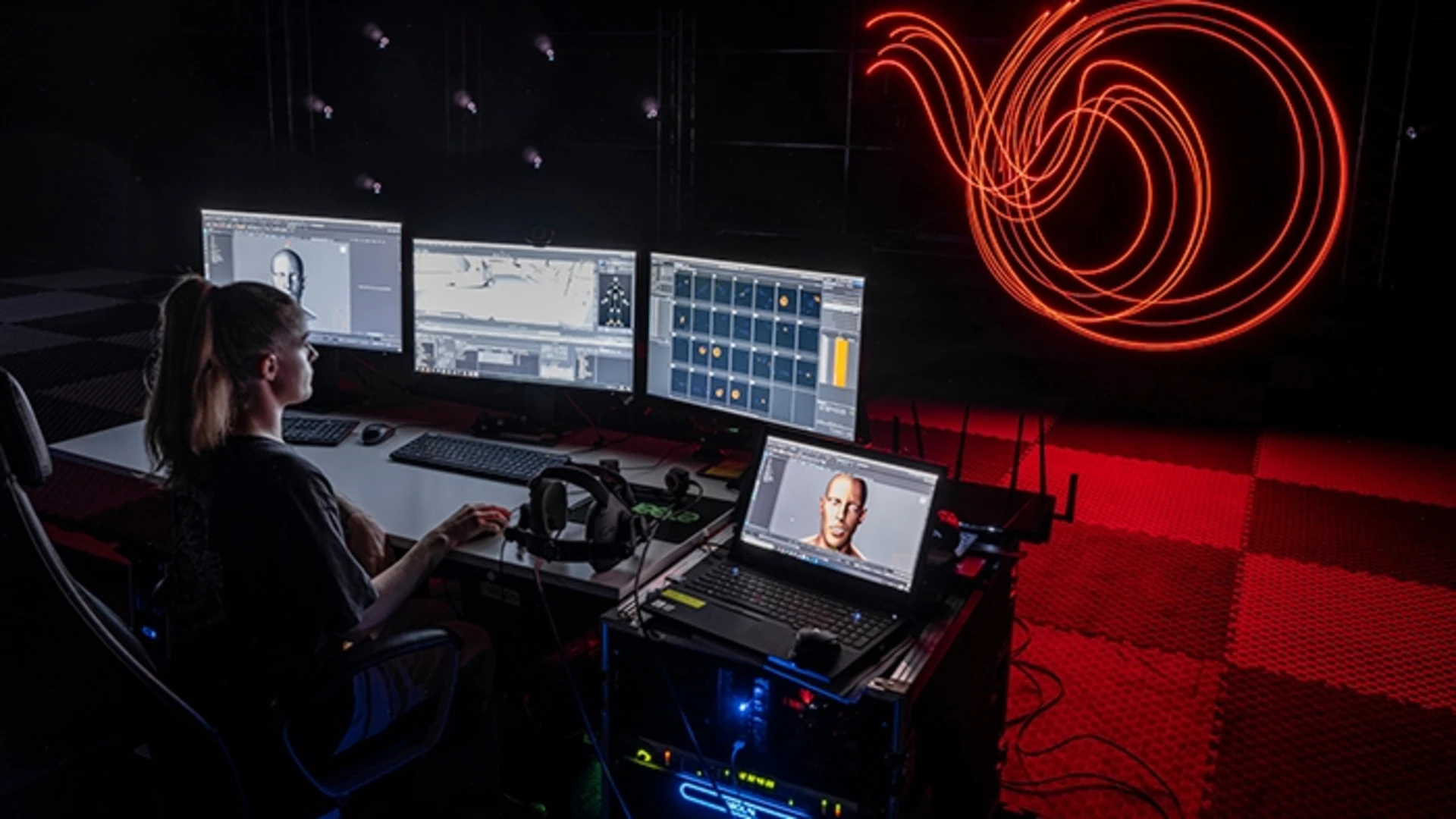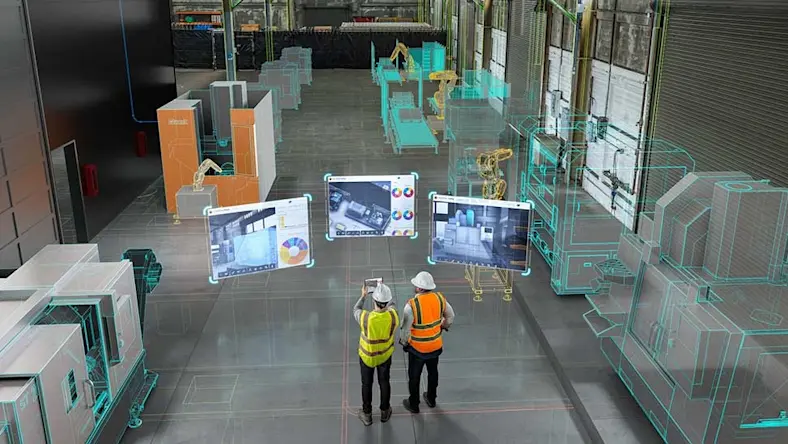& Construction

Integrated BIM tools, including Revit, AutoCAD, and Civil 3D
& Manufacturing

Professional CAD/CAM tools built on Inventor and AutoCAD
For business leaders managing substantial change in their organizations and feeling the mounting pressure to do so quickly amid uncertain and turbulent times, consider the words of ancient Chinese philosopher Lao Tzu: “The journey of a thousand miles begins with one step.”
Don’t delay on taking that first step, though. As digitization accelerates—particularly with artificial intelligence (AI) tools like ChatGPT making lighter work of previously complex, time-consuming processes—companies that have lagged in their digital transformation will catch up. That means companies at the top of their digital game must be more innovative and capable than their competitors. And that’s why, as the rising tide begins to float all boats, savvy leaders are investing in technology and innovation.
This unprecedented era inspired Autodesk to dive deep into how companies that design and make things like buildings, bridges, products, and movies are faring with today’s emergent drivers of change that are shaping leaders’ business decisions. The result is the inaugural State of Design & Make report, which explores the drivers of change in three critical areas: business resilience, attracting and retaining talent, and sustainability.
The report features survey results and interviews with 2,565 industry leaders, futurists, and experts in the architecture, engineering, construction, and operations (AECO); design and manufacturing (D&M); and media and entertainment (M&E) industries.
What does it take to adapt, survive, and even thrive during unexpected change and in unfamiliar territory? The answer is digital maturity—how far along a company is in its digital-transformation journey. Seventy-nine percent of companies surveyed for State of Design & Make believe there is greater uncertainty in the world. Seventy-two percent of digitally mature companies feel prepared for that uncertainty, compared to 52% of less digitally equipped companies. This is in part because operating in a digital ecosystem rapidly delivers insights that help leaders quickly make informed decisions that can turn obstacles into opportunities and create a solid foundation to withstand disruption.
The definition of resilience is the ability to recover quickly from disruption. But it’s also the ability to minimize the impact of disruption in the first place. And there is a direct correlation between digital maturity and business resilience. When the pandemic hit, companies that had more digital tools took less of a hit and were able to pivot to alternate operating strategies. Think of it as business retrofitting: Just like buildings can be retrofit to survive earthquakes, being digitally prepared allows companies to withstand a big temblor that strikes without warning.
The way businesses adapted to pandemic-induced remote work is a great example. Companies that relied on manual processes were scrambling to accommodate employees, wondering, “How am I going to get the right information to the right people at the right time when I relied on face-to-face contact to achieve that?” Meanwhile, digitally progressive companies went into this unknown wilderness with a sense of, “I got this covered,” and had a more seamless transition to remote collaboration.
The pandemic also revealed cracks in global supply chains as cargo movements slowed to a crawl and ports shut down. Companies that design and make things are now figuring out how to have local backup suppliers and multiple supply-chain partners. This is happening in conjunction with increased focus on striking the right balance between building up inventories and relying on just-in-time delivery practices. In a pre-pandemic world, it was relatively easy to restock from a single vendor as needed, but building an expanded, diversified network creates greater complexity. Digital tools allow companies to manage the logistics of a multipolar supply chain.
Samantha Snabes—co-founder of a large 3D-printer manufacturing and services company called re:3D and one of 76 business leaders interviewed for State of Design & Make—explains the key factors driving resilience: “Over the next three years, the manufacturing industry should have three priorities: trade-skill development, supply-chain diversification, and standardization.”
According to those surveyed for the report, companies are increasing investments in technology (74%), innovation (73%), and data management (70%). The more people understand how to gather and use data, the more they can use those insights to understand their businesses better and design strategies for a more resilient future.
Finding and retaining talent is the No. 1 challenge for those surveyed in State of Design & Make. According to the U.S. Chamber of Commerce, as of this writing, there are currently 10.1 million job openings in this country—but only 5.8 million job seekers. Employers say the competition for talent has stunted innovation (52%), delayed project delivery (59%), and impacted the ability to reach business goals (50%). Several things are at play here: a retiring workforce (particularly in D&M and AECO), the Great Resignation, and—probably the most significant—the skills gap brought on by the rapid rise of digital transformation.
Seventy-two percent of respondents said the workforce has changed more in the past three years than in the past quarter-century. People need a whole new set of knowledge for jobs of the future. Companies that design and make everything from toys to transportation systems are looking for candidates with skills in areas such as AI and machine learning, software engineering, ESG, data science, and cloud computing. But many job seekers don’t have the experience to support new ways of working.
As companies accelerate their digitization—and digitalization—the notion of having a digitally capable workforce is catching on. Ninety-three percent of organizations say upskilling their current workforce is important. Half of the respondents said they plan to train their employees on the job. Fortunately, the younger generation is digitally savvy and quick to learn new tools and technology. As JJ Johnson, chief operating officer of modern stair and railing system company Viewrail, put it: “We’re not bringing in automation to replace the person. We’re bringing in automation to replace the position. That way, we can take the person and find a higher-level opportunity for them.” It’s a win-win strategy.
Sustainability is an issue that companies can’t avoid any longer. More and more governments are mandating it, and investors, employees, and customers are demanding it. Eighty-two percent of State of Design & Make responses indicated customers are putting on the most pressure. Meanwhile, the report reveals most leaders believe sustainability is a smart business strategy that delivers great value, but only 17% are truly proud of their company’s sustainability initiatives.
When it comes to solving sustainability problems, people often focus their strategies on what’s popular versus what will make the most difference. Fossil-fuel use is the main source of carbon emissions, though over the next 20 or 30 years, energy production will see sizable shifts to renewable sources. Leaders need to ask, “What’s the energy production in our company?” and look at ways to curb those contributions to greenhouse gases.
Digital processes within cloud-connected ecosystems can provide the tools—such as the EC3 calculator, which helps measure embodied carbon in building materials—to achieve sustainability goals for everything companies design and make.
It’s inspiring that 94% of companies surveyed in all industries expect to prioritize sustainable strategies in the coming years.
Manufacturing companies plan to apply new design principles and use AI to achieve sustainability goals.
The AECO industry is prioritizing renewable energy and investing in energy-efficient machinery.
Media and entertainment companies might not seem to be energy guzzlers, but all the necessary computing power adds up. Jeremy Smith, chief technology officer of VFX studio Jellyfish Pictures, shared his company’s sustainability mission: “We’re making sure that our workflows are as optimized as they can be so that we’re not wasting computing cycles.”
There’s been a noticeable change in mindset among leaders, from “green is good public relations” to “sustainability is a core value.” Ninety percent of the companies represented in State of Design & Make say they have made strategic moves to improve their sustainability.
Real change starts small, that single step in the 1,000-mile journey. It begins by handing over basic processes to digital tools. As companies progress into that digitally mature level, they can unlock all that valuable data and suddenly have insights to make better decisions that will help them prepare for whatever tomorrow brings.
Andrew Anagnost is the president and chief executive officer of Autodesk.Dr. Anagnost’s career spans more than 25 years of product, business, and marketing experience focused on driving strategy, transformation, and product development — and includes positions at Autodesk, Lockheed Aeronautical Systems Company, and EXA Corporation. He also completed a doctorate degree at Stanford University and worked at NASA Ames Research Center as an NRC post-doctoral fellow.Anagnost began his career at Autodesk in 1997 and has held a wide range of roles in the areas of marketing, new business development, product management, and product development. Prior to becoming President and CEO in June 217, he served as Chief Marketing Officer and SVP of the Business Strategy & Marketing organization. In this role, Andrew served as architect and leader of Autodesk’s business model transition—moving the company to become a software-as-a-service (SaaS) solutions provider. Previously, Anagnost held various executive positions across Autodesk. Early in his Autodesk career, he led the development of the company’s manufacturing products and grew Autodesk Inventor revenue to over $500 million.Anagnost is a member of the Autodesk Board of Directors. He holds a Bachelor of Science Degree in Mechanical Engineering from California State University, Northridge (CSUN), and holds both an MS in Engineering Science and a PhD in Aeronautical Engineering and Computer Science from Stanford University.
Executive insights
Executive insights
Executive insights







